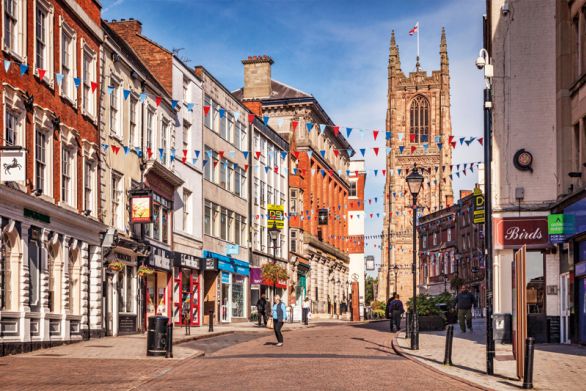As the Labour Government sets its sights on a 1.5 million homebuilding target, how can we ensure these communities work for the homeowners and renters of the future? Following our recent article on the history of New Towns, this latest piece explores what considerations transportation planners need to make today for New Towns that will be completed in 20 or 30 years.
More than 100 sites have been proposed to host one of the UK Government’s New Towns, in what is being called "the largest homebuilding program since the post-war era."
Despite the best intentions, post-war New Towns had mixed results in delivering sustainable communities, often resulting in empty town centers, poor pedestrian and cycling infrastructure, and high car dependency.
By the time the next New Towns are completed, their residents may live very different lifestyles from those shaping development priorities today. Potential buyers and renters of these homes are currently 10 years old—how can we plan for the way they will live?
How Is Planning and Development Already Changing?
Today, the planning system is increasingly considering the idea that future homeowners and renters will have fewer personal vehicles per household—or perhaps none at all. Some developments are already being designed without garages and driveways, freeing up space for homes, amenities, and public areas.
Car ownership is declining among younger generations. In the UK, the percentage of young people with driver's licenses has dropped significantly:
- In 1992: 48% of 17–20-year-olds and 75% of 21–29-year-olds had a driver’s license.
- By 2024: Only 29% of 17–20-year-olds and 63% of 21–29-year-olds had a driver’s license.
A 2020 study also found that in areas covering a third of the UK population, car ownership levels had dropped. Several factors contribute to this trend:
- Insecure employment and increased access to higher education
- Urbanization and improved public transportation
- The rising cost of insurance and vehicle ownership (as noted by AutoTrader in 2024)
- Environmental concerns pushing people away from car ownership
Neighborhoods designed for a generation less reliant on personal vehicles may resemble European car-free districts like Pontevedra, Spain, or Freiburg, Germany. In these cases, car-free zones are mostly confined to central districts, with parking on the periphery. However, future car-free neighborhoods may prohibit private vehicle ownership altogether or prevent residents from bringing personal cars into the area.
To support this shift and reduce vehicle reliance overall, future British New Towns will need:
- Locally placed amenities to encourage walking and cycling
- Shared micromobility options (e-bikes, scooters, etc.)
- Expanded public transit links and innovative mobility services
- Car clubs or shared vehicle programs for essential trips
- Sustainable last-mile freight solutions, such as cargo bikes and consolidated delivery hubs
Reimagining urban space in this way allows previously car-dominated areas to be repurposed for housing, green spaces, sustainable drainage systems, and more.
What Could the Future Hold?
Looking further ahead, emerging technology could reduce travel demand altogether. Several trends are already shifting travel habits:
- Remote work and hybrid models
- On-demand entertainment and streaming services
- E-commerce, next-day deliveries, and convenience-driven apps
- AI-powered virtual collaboration tools
These trends, accelerated by the COVID-19 pandemic, may eventually lead to fewer car trips overall.
For shorter journeys—such as trips to train stations, hospital appointments, or local leisure spots—autonomous vehicles and on-demand Direct Rapid Transit (DRT) services could replace private cars. DRT trials have already taken place in the UK’s Future Mobility Zones, including Solent and the West Midlands.
Meanwhile, the future of deliveries may include drone technology, which has already been approved for trials in Scotland. Vertiports—vertical takeoff and landing pads for air travel—could emerge on the edges of new developments, making helicopter-style urban travel more accessible.
Challenges for Planners and Decision-Makers
While these innovations could transform transportation, they also present new governance challenges:
- Will autonomous vehicles increase congestion?
- Can connected vehicle systems navigate complex urban environments?
- How will drones integrate into dense urban areas?
- Will vertiports only serve a privileged few?
A Public Perception Challenge
In the meantime, planners continue designing new housing and developments with fewer parking spaces, assuming personal vehicle ownership will decline. However, these forward-thinking designs are often rejected during public consultations, attended mostly by parents and grandparents rather than the next generation of homeowners and renters.
Until we can help the public envision a future less dependent on private cars—and build the necessary infrastructure to support truly sustainable travel—the next generation of New Towns may face many of the same transportation challenges as those we live in today.













